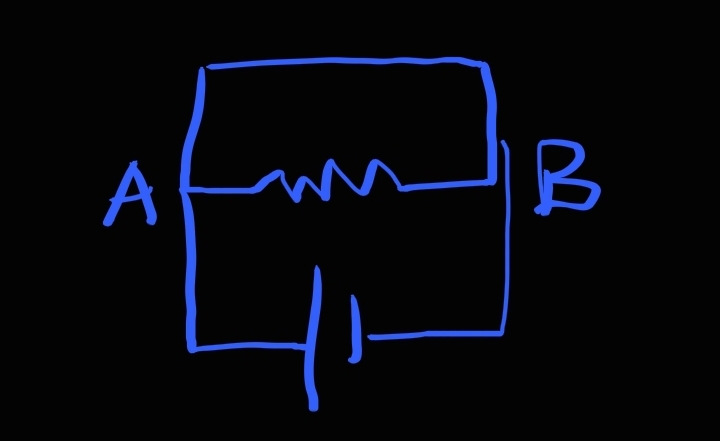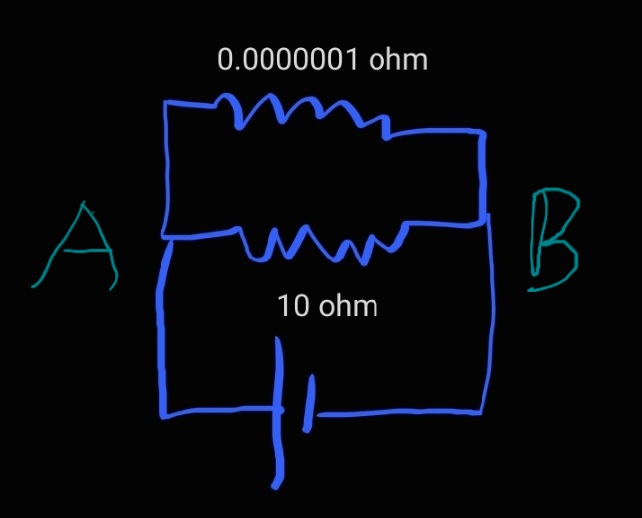Suppose, in an ideal situation, I've connected a zero resistance wire in parallel with a resistor to a battery
The potential difference across points A and B is zero because they are connected to each other via a zero resistance wire. So, the current will pass through the wire.. And no current will pass through the resistor. (please ignore the fact that the terminals of the battery are connected to each other.. Hehe)
BUT this was an ideal situation. Practically, a wire cannot have zero resistance. So, if I made such a circuit in real life, it would look like this:
Please ignore my horrible circuit drawing skills
The resistor with 0.0000001 ohm resistance is our "zero resistance" wire and the 10 ohm resistor is connected in parallel to it.
Now, the voltage difference between A and B is not zero. It is equal to the emf our battery provides. SO current STILL PASSES through the 10 ohm resistor and there is no impact of the stupid "zero resistance" wire being there. Even if we remove the "zero resistance" wire, which has some resistance, a current with an equal magnitude will pass through the 10 ohm resistor.
However, this does not happen practically.
WHY?
Thanks. I hope I've made myself clear.
PS please try to explain in simple words :)

